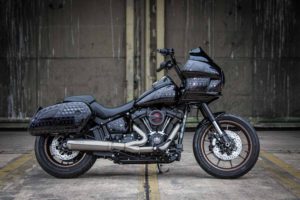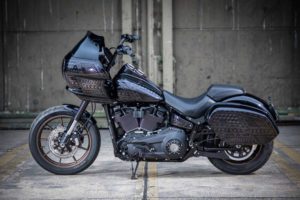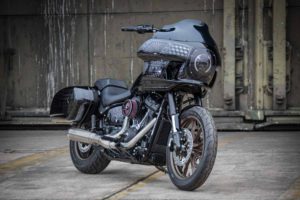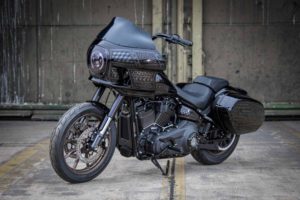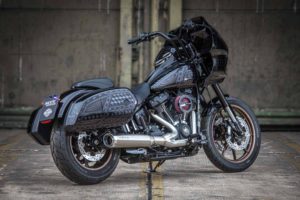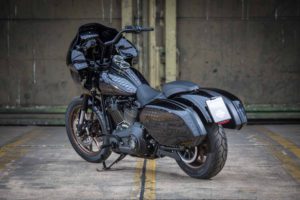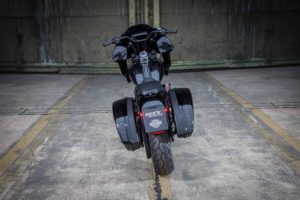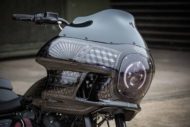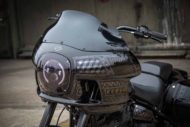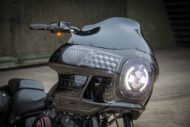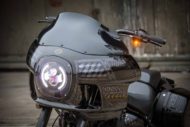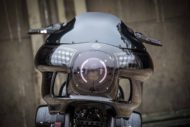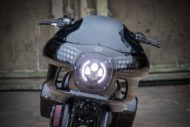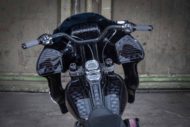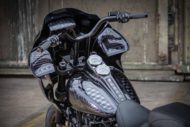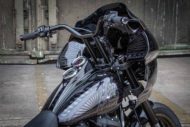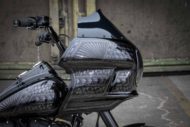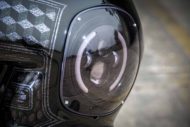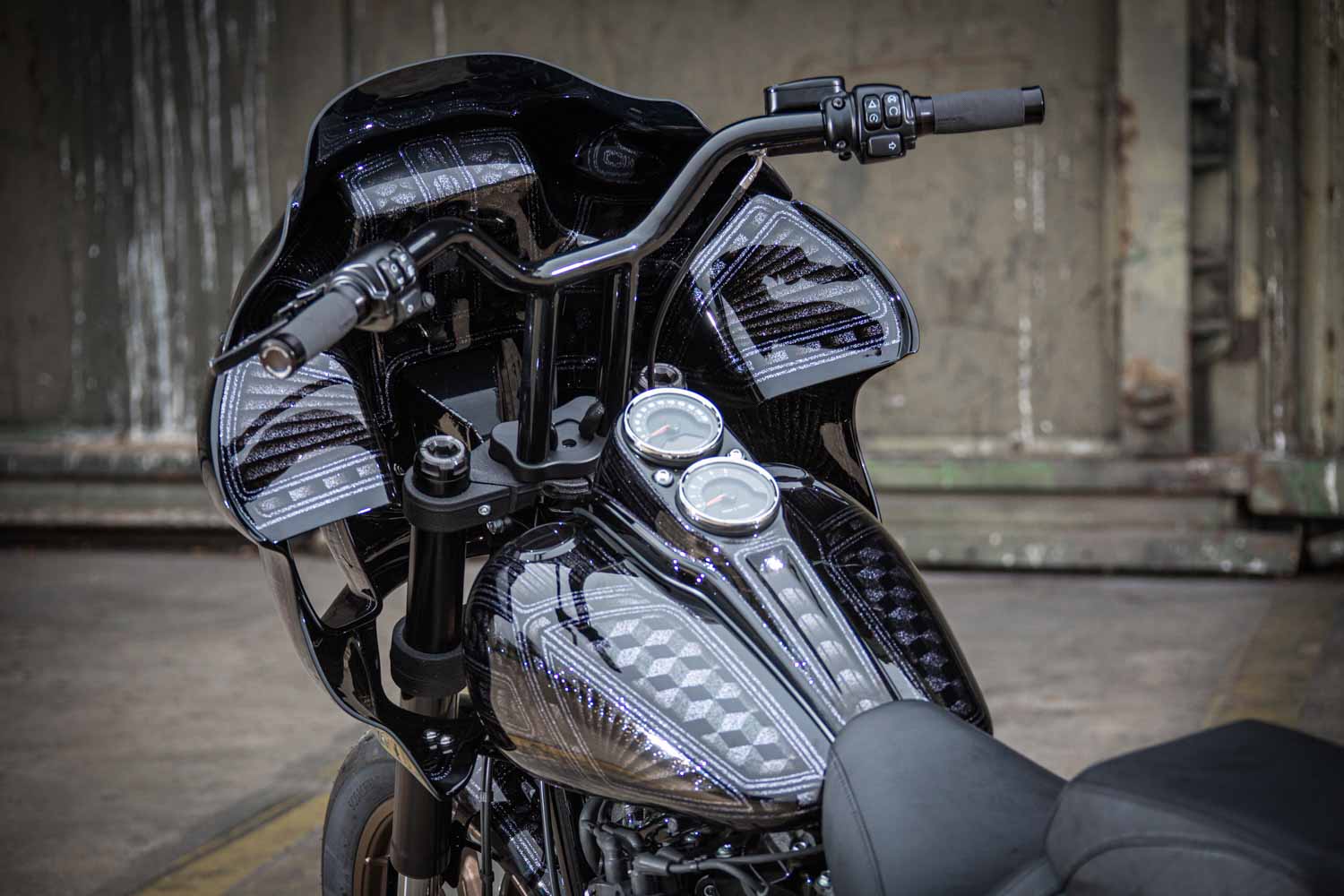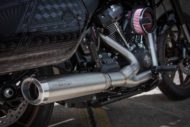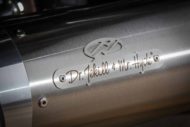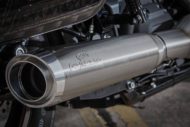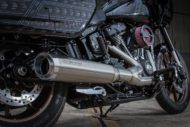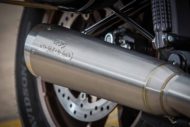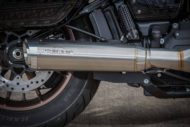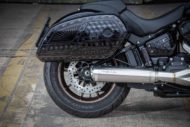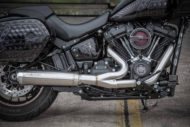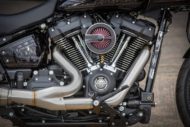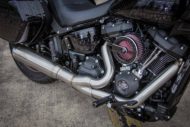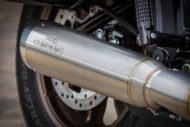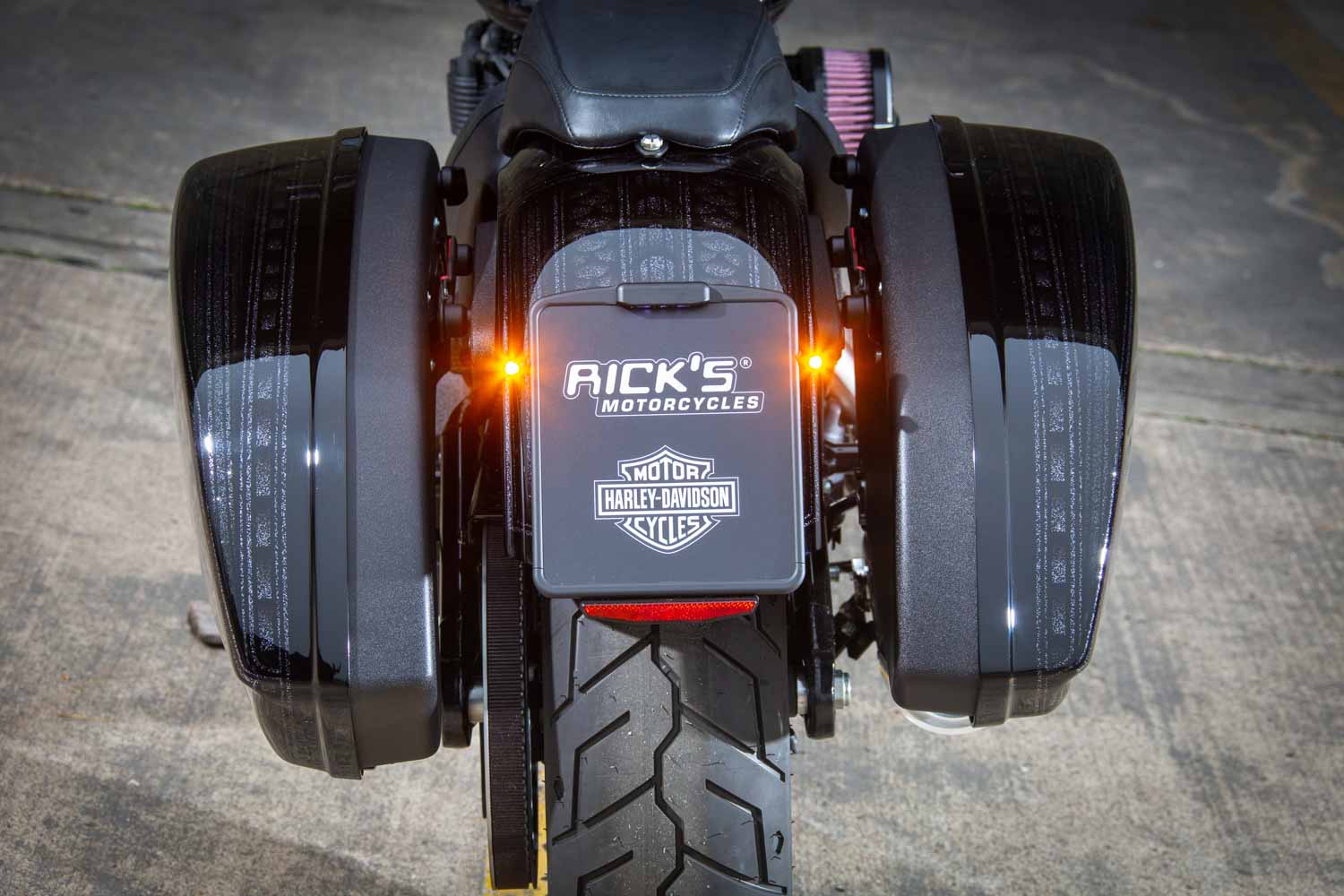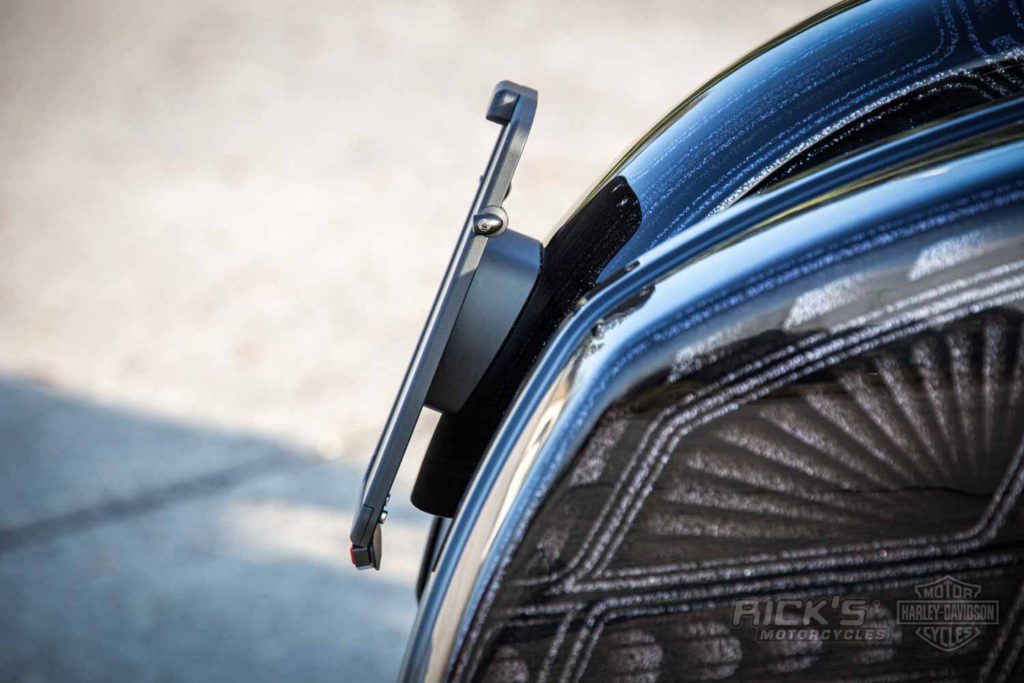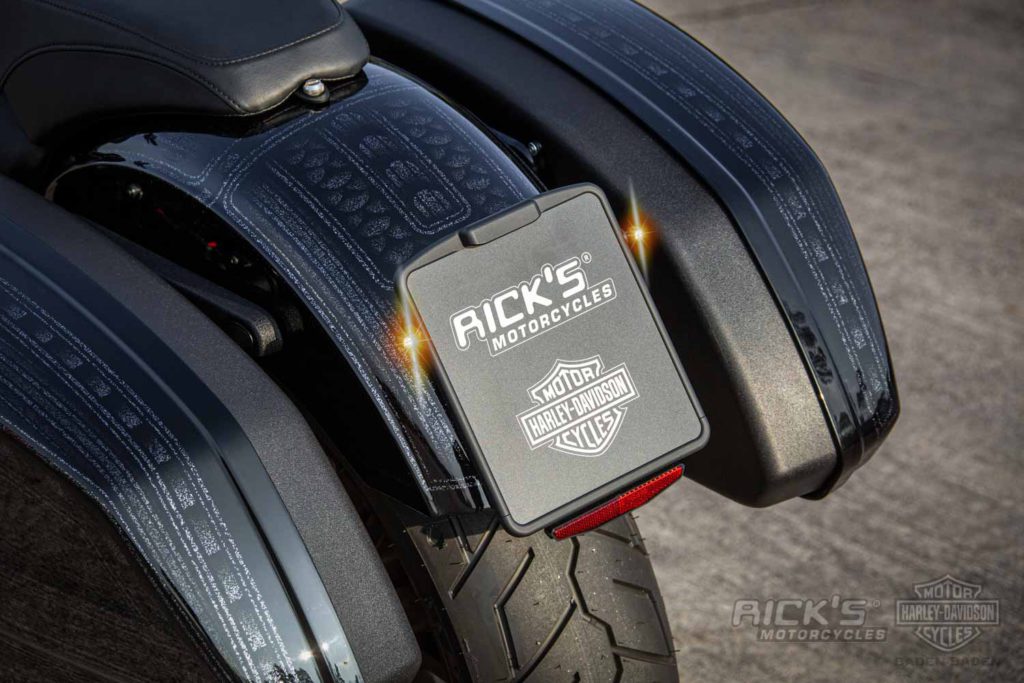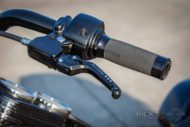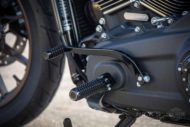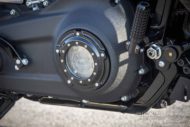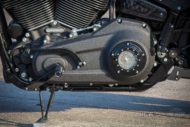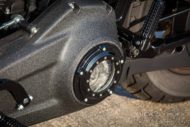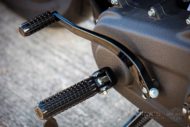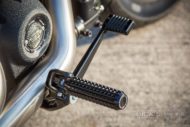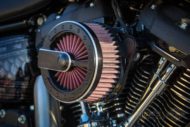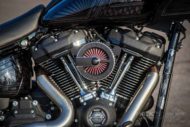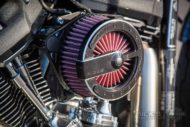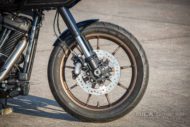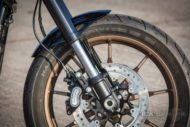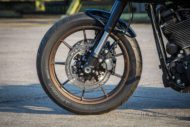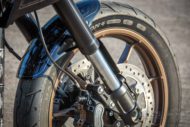70th Clubstyle
During the last few months, Rick’s has already converted two Harley-Davidson Lowriders into trendy Clubstyle cruisers in the style of an FXRT, FXRD or FXRP. Now, with an in-house made fairing, there is a suitable part in the range that makes it possible to interpret these bikes from the 70s even more fittingly. If these fairings remind you of police bikes from this era, then you are right, and for Rick’s retro fairing, these served as a template.
As already mentioned, the popular Clubstyle is based on bikes from the 70s. The beefy fairings are well known from American police bikes from this era. Rick’s Motorcycles has now developed a replica of these fairings which largely resembles those. Rick’s has been wanting to build a bike with a fairing in this style for a while. Problem number 1 was that originals, if you can find one, are worth their value in gold. Different companies are offering similar products, and that brings us to problem number 2, because their quality and fit have not lived up to the high expectations of Rick’s Motorcycles. That left only one possibility, and that was to make its own part to satisfy those needs.

Rick’s Clubstyle fairing is made as a replica of the original police bike fairings from high-quality fiberglass with gel coating. Thanks to a modern 3-D scan, the shape could be taken from the original and adapted to fit Milwaukee-Eight Softail models from 2018. The construction of the steel holders alone will impress any technical freaks as the fairing can, as required, simply be adjusted in height. For fitting it safely to the bike, the holder is screwed onto laminated steel strips. As headlights, 7-inch versions, either from Harley-Davidson or aftermarket products, can be used. Rick’s black coated Clubstyle handlebar catches the eye, but much more interesting is the adapter with which the handlebar tubing is screwed to the triple tree. The mounting position of the handlebar can be moved 4 cm closer in the direction of the rider, which doesn’t sound much, but improves the sitting position and handling enormously.

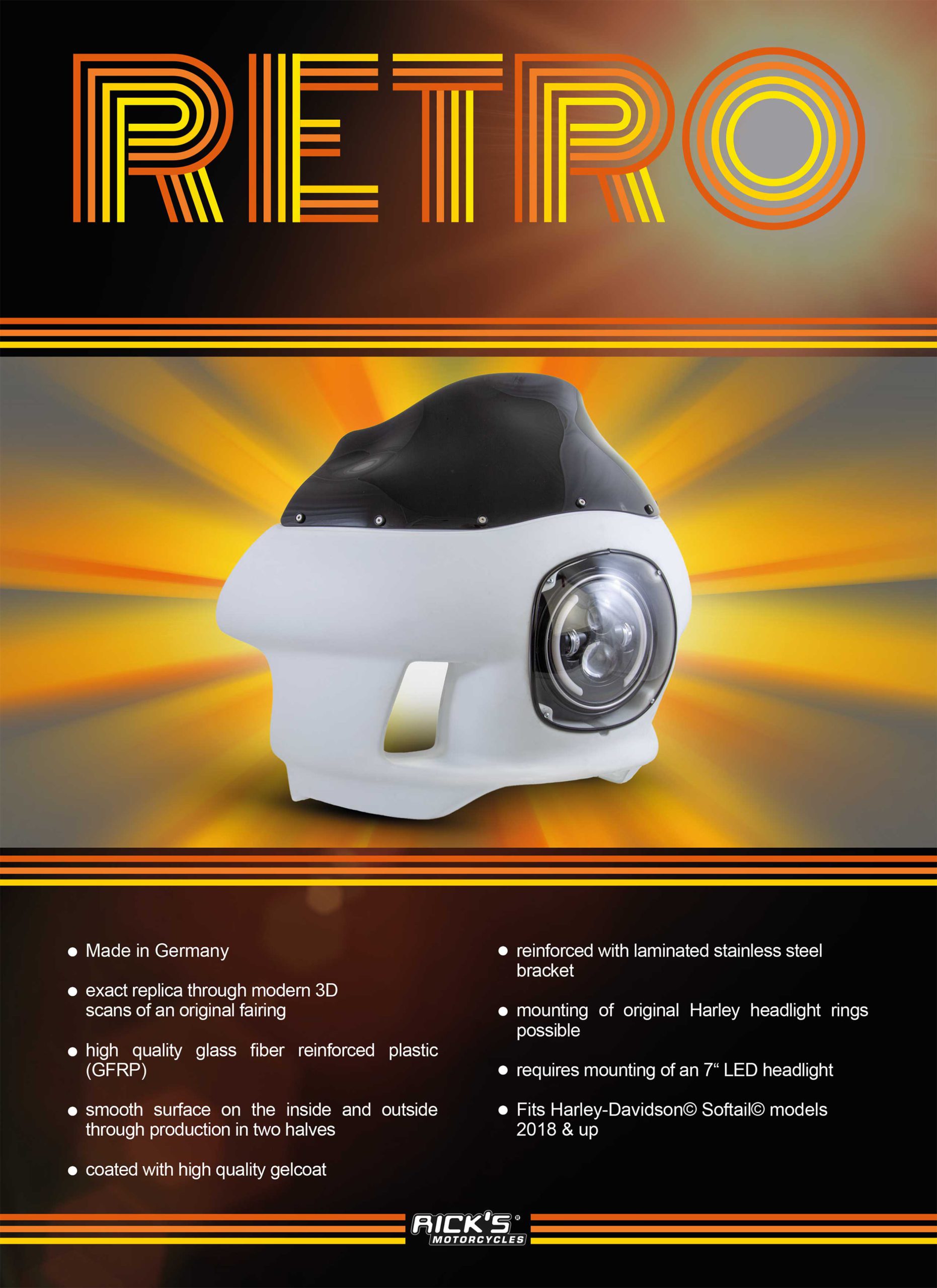
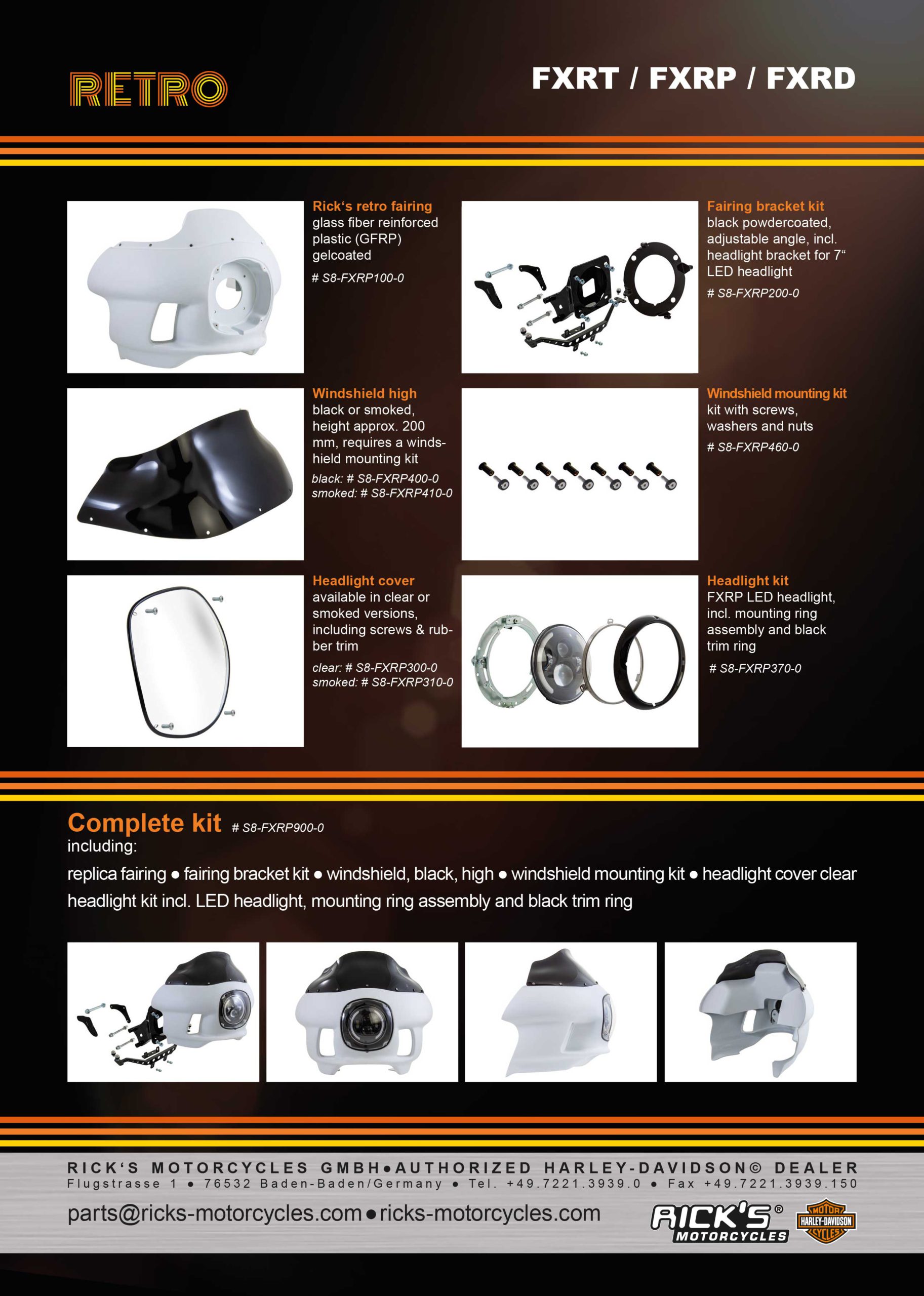



So far, we have introduced the most striking part of the bike, but let’s not forget the many other highlights, for example the adjustable exhaust system from Dr. Jekill & Mr. Hyde. Rick’s Motorcycles is one of the first companies able to use this brand-new 2 into 1 system in a motorcycle. Including pipes and heat shields in brushed stainless steel look and the stylish end caps, it appears to be made for bikes of this style. For the side cases, the sister model of the Lowrider, the Sport Glide, was used.
Talking about the exhaust, the air filter also deserves a mention. Rick’s air filters are available in many different designs. All are flow-optimized and therefore suitable for riders who appreciate performance and looks. It goes without saying that with these new components the engine control also had to be adjusted, and Rick’s has a modern test bench on which every riding situation can be simulated and the mapping adjusted accordingly.
Another detail that deserves attention is the license plate holder, which was mounted centered on the fender. Rick’s plate frame is available in three different versions. A simple one which consists of the machined plate with license plate illumination, a further one has in addition to the license plate illumination integrated 3 into 1 lights, including indicator, rear and brake light. The third is the version used here, prepared for the 3 into 1 Kellermann Atto DF. On all, the license plate can be inserted from the bottom into the holder and fixed with a screwed-on cover. A suitable adapter with which the plate can be mounted onto the fender is also offered by Rick’s.
Other accessories on the bike that should be mentioned have also all been made by Rick’s, for example the belt cover, which is available in different designs and surfaces for all Milwaukee-Eight Softail models from 2018. The foot controls can be found in Rick’s parts range under the name AK 7.4. These are available for the rider with shift peg as well as passenger pegs. They fit perfectly into the stock location and can therefore be exchanged quickly and without problems. Rick’s bullseye derby cover has a clear Makrolon window and allows a view of the rotating clutch.
For those of you who like to read, we have included a story about the history of these fairings, the author of which is Horst Rösler, aka “the Motographer“.
Text & photos: Peter Schulz

Contact Custom Parts
Philippe Camboni
fon: +49 7221 3939 117
email: p.camboni@hd-badenbaden.de
Marcos Maier
fon: +49 7221 3939 217
email: m.maier@hd-badenbaden.de
Contact new & used vehicles
Benjamin Walter
fon: +49 7221 3939 222
email: b.walter@hd-badenbaden.de
Ralph Scherrer
fon: +49 7221 3939 223
email: r.scherrer@hd-badenbaden.de








